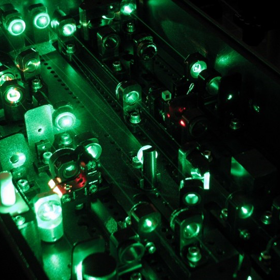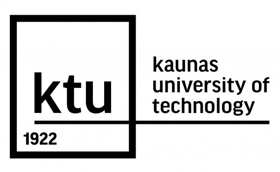The first working laser was demonstrated in 1960, and afterward, the development of intense light sources has evolved rapidly opening a variety of possibilities for applications starting from the laser scanners in shops or laser printers in offices and ending with extremely intense and short duration (down to attoseconds, 10-18s) pulsed light sources for groundbreaking research. The importance of the laser-related research field was acknowledged by several Nobel prizes in Physics given for the development of the laser itself and more recently for advances in pulsed laser development via chirped pulse amplification method and laser applications like manipulation of micro-objects. This micro-module is devoted to attendees interested in emerging technologies in photonics and does not require more than basic knowledge of physics. In this micro-module, you will learn the principles of laser operation and will find out the variety of application possibilities of ultrafast laser sources in scientific research as well as in commercial products. You’ll be able to explain why ultra-short laser pulses are necessary for creating high-tech products.

Laser Principles and Applications
Laser Principles and Applications
Only a few seats left!
Interested in this learning opportunity? Apply right away to increase your chances of securing a spot.
Description
Lithuania is known as a country with a strong background in laser physics. Currently, Lithuania accounts for more than half of the global market of pico-second laser spectrometers. The recent progress in pulsed lasers unleashed innovative fabrication and characterization technologies which helped to establish related new product markets. The expansion of laser utilization in consumer electronics production and even biomedicine demands an understanding of the basic laser operation principles. This micro-module aims to explain the advantages of pulsed lasers, peripheral products, and related new technologies.
The Team
- Study format
- Online
- Application period
- 18 July – 1 October 2024
- Study period
- 15 October – 26 November 2024
- Credits
- 2 ECTS
- Hosting university
- Kaunas University of Technology
Learning outcomes
Describe the application limits of the theories explaining the nature of light
Students will be able to differentiate which effects related to light interaction with the material can be described using ray, wave, electromagnetic or quantum theories.
ESCO SKILLS
Interpret working principles of continuous wave and pulsed lasers
The selection of laser working parameters is crucial to apply these devices for different applications. Students will be able to select between different lasers available in the market taking in mind the field of application.
ESCO SKILLS
Describe the nonlinear and ultrafast phenomena
Students will be able to discern nonlinear processes taking place in material during the interaction with the laser radiation.
ESCO SKILLS
Choose laser processing parameters for micro-/nano- processing of material surfaces and in the bulk
Students will be able to choose the laser processing parameters in case of subtractive or additive manufacturing.
ESCO SKILLS
Potential progress
This graph shows the potential you could reach if you take this learning opportunity and how it fits your goal. You can also make a comparison to your current and potential competencies by pressing the buttons.
We recommend to turn your device to view graph
Not sure which competencies suit you?
Take our motivation scan to find learning opportunities that will help you reach your potential goal and growth.
Information
The first working laser was demonstrated in 1960, and afterward, the development of intense light sources has evolved rapidly opening a variety of possibilities for applications starting from the laser scanners in shops or laser printers in offices and ending with extremely intense and short duration (down to attoseconds, 10-18s) pulsed light sources for groundbreaking research. The importance of the laser-related research field was acknowledged by several Nobel prizes in Physics given for the development of the laser itself and more recently for advances in pulsed laser development via chirped pulse amplification method and laser applications like manipulation of micro-objects. This micro-module is devoted to attendees interested in emerging technologies in photonics and does not require more than basic knowledge of physics. In this micro-module, you will learn the principles of laser operation and will find out the variety of application possibilities of ultrafast laser sources in scientific research as well as in commercial products. You’ll be able to explain why ultra-short laser pulses are necessary for creating high-tech products.

